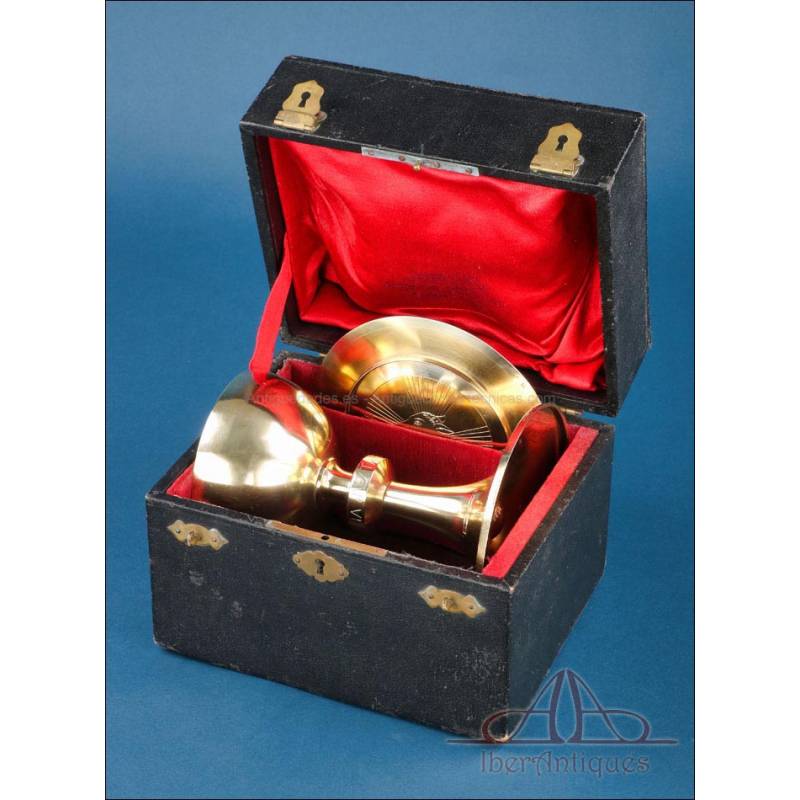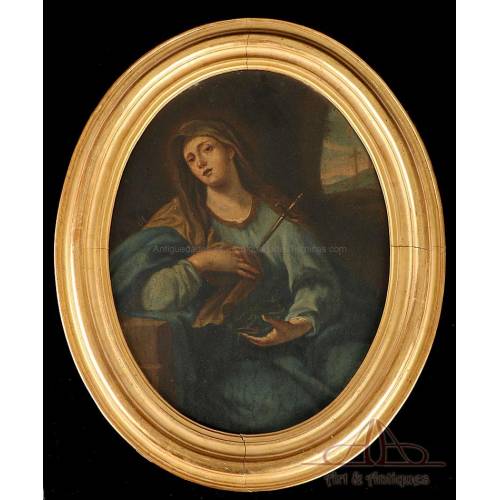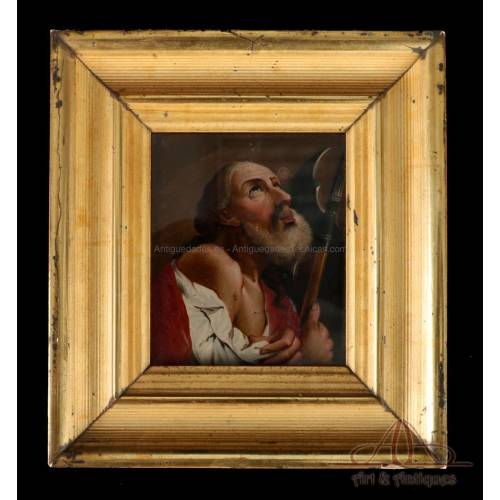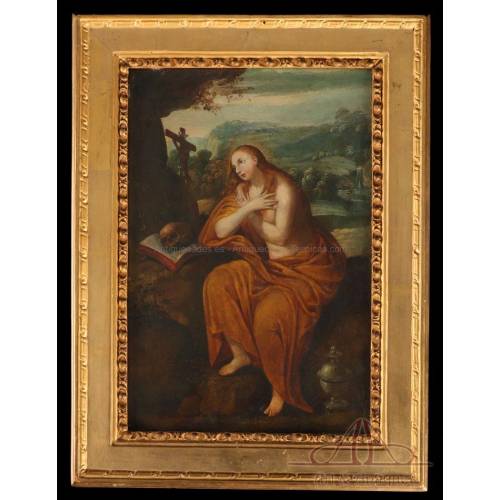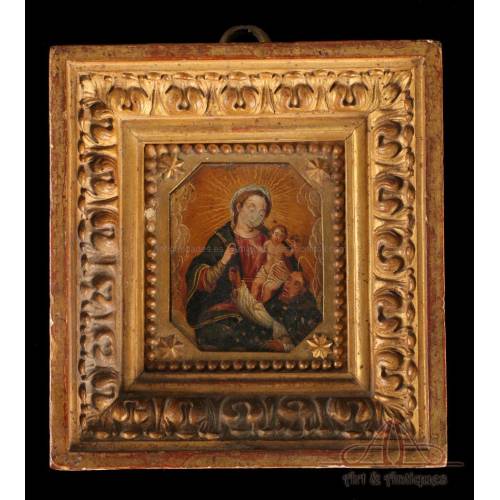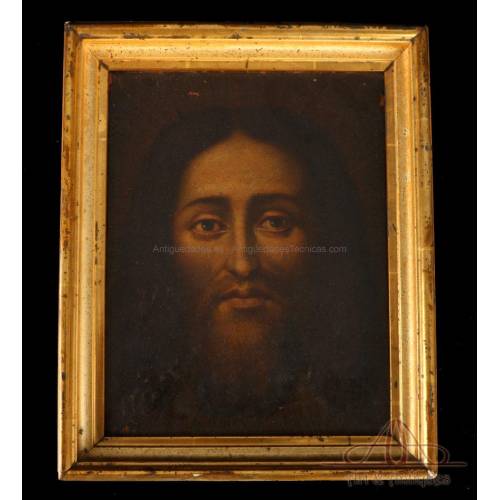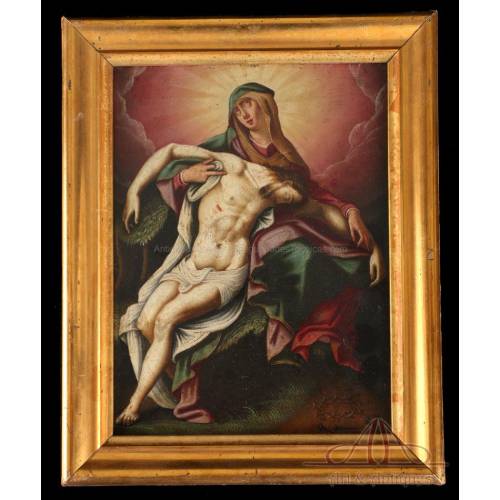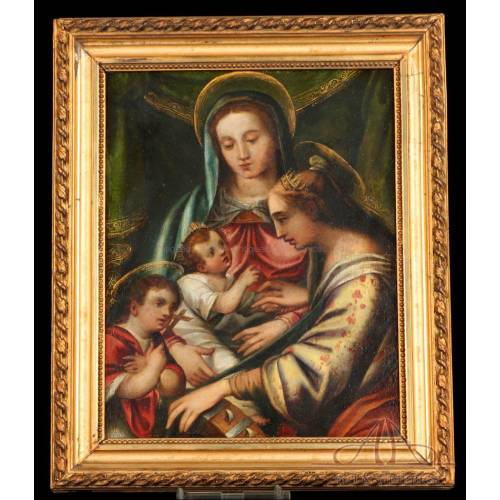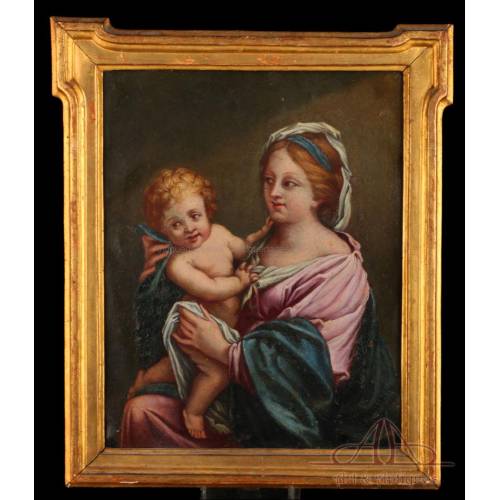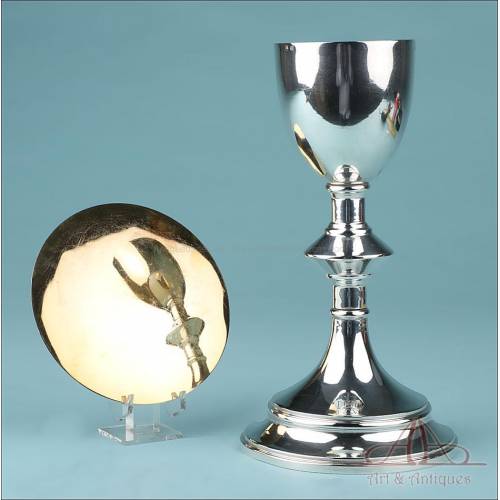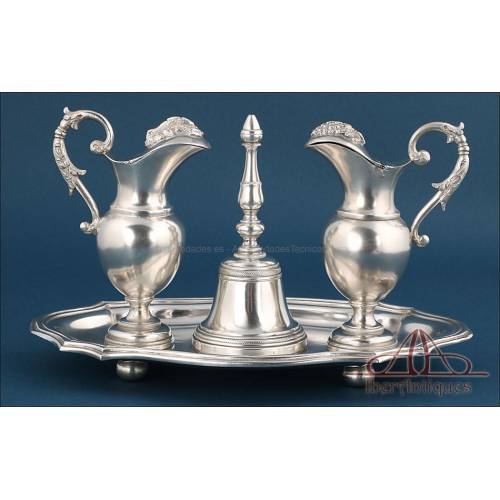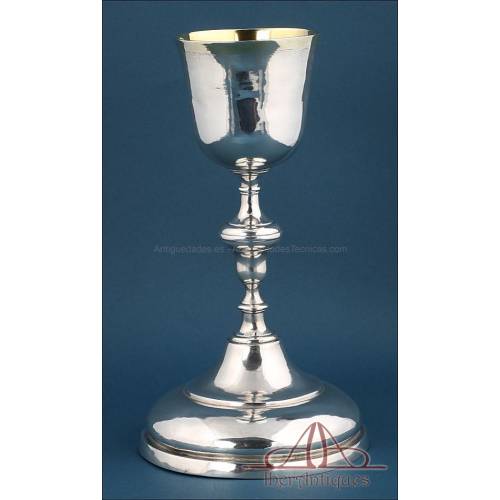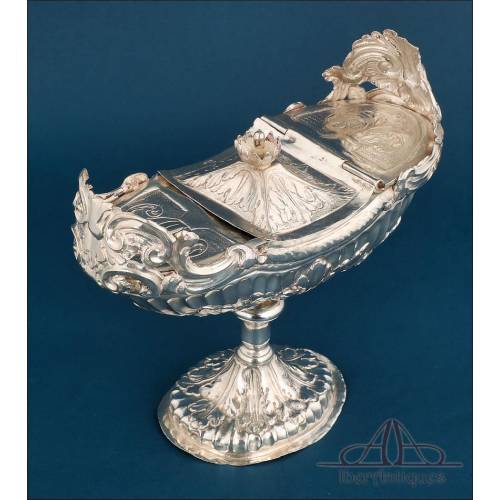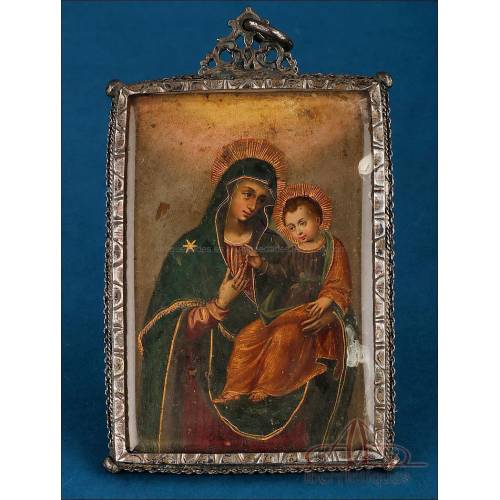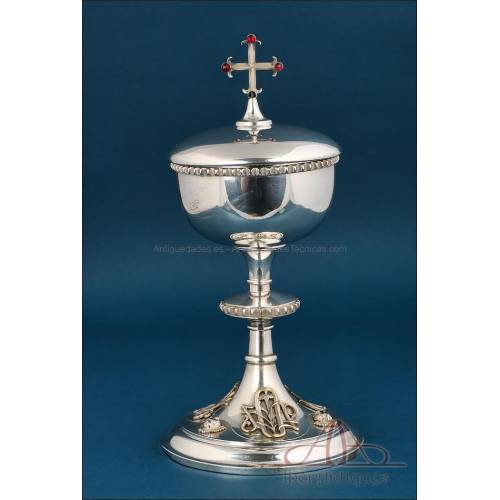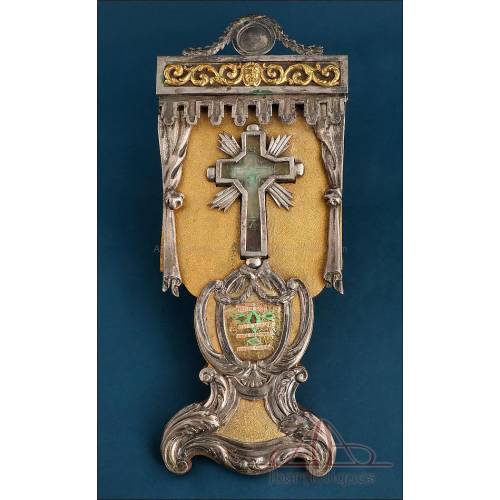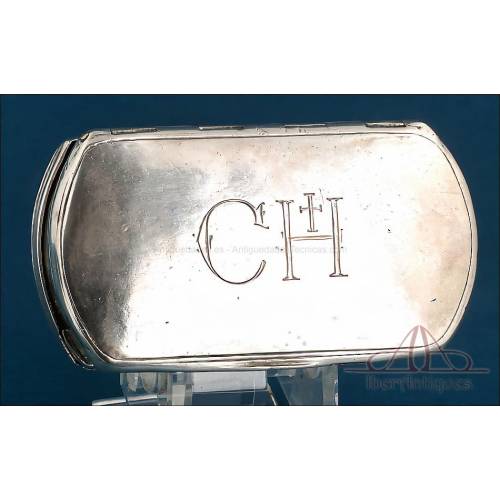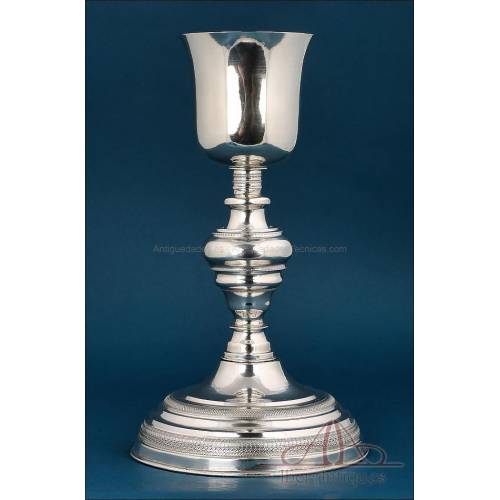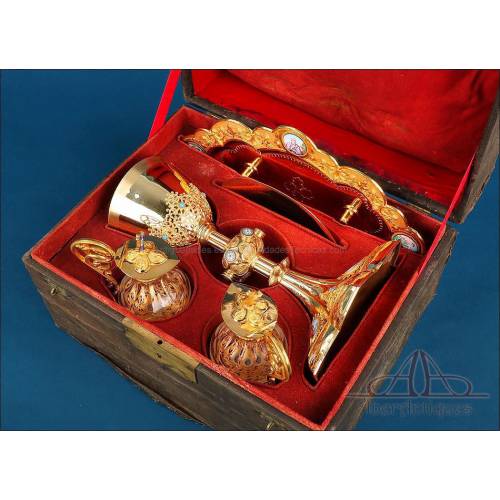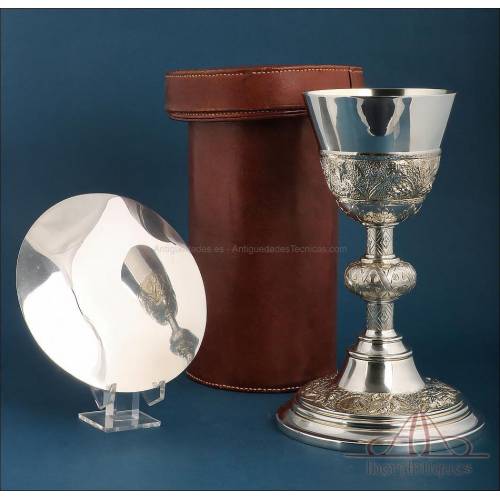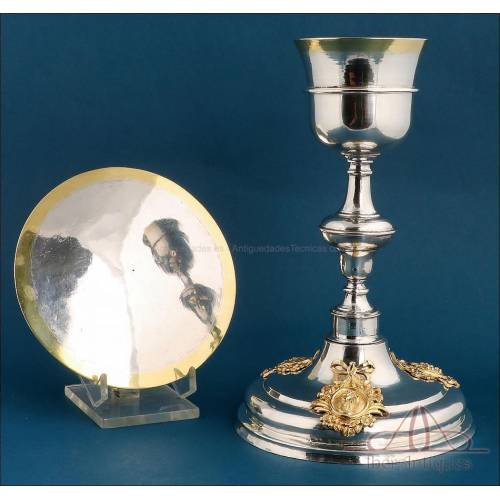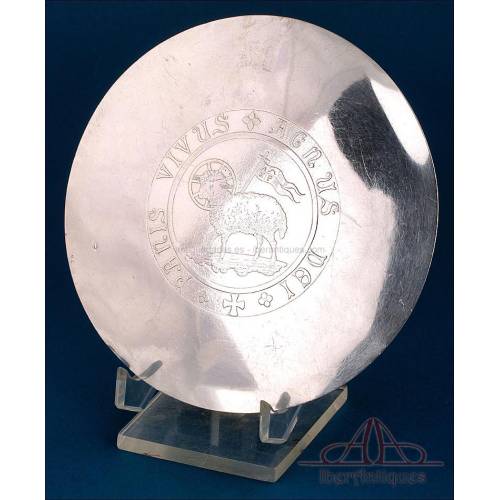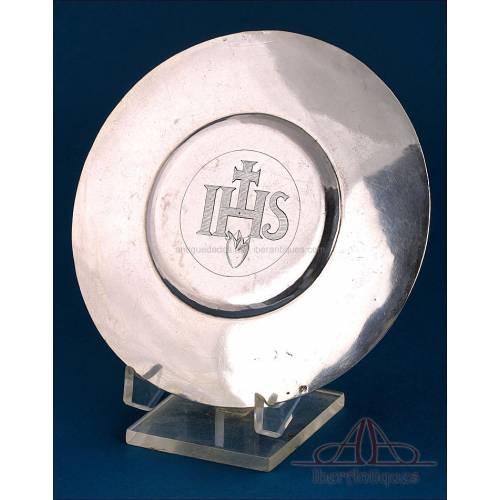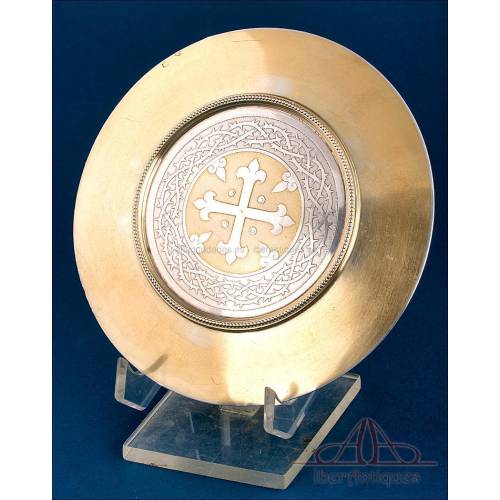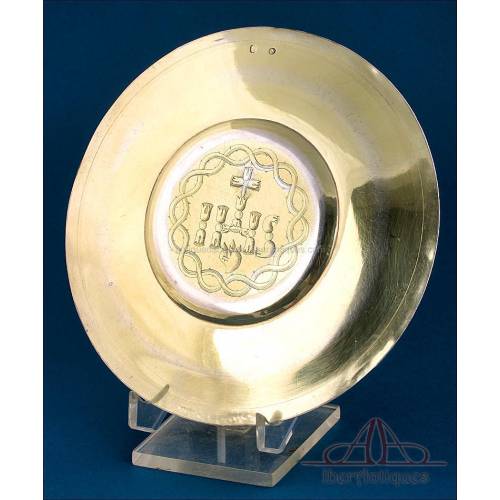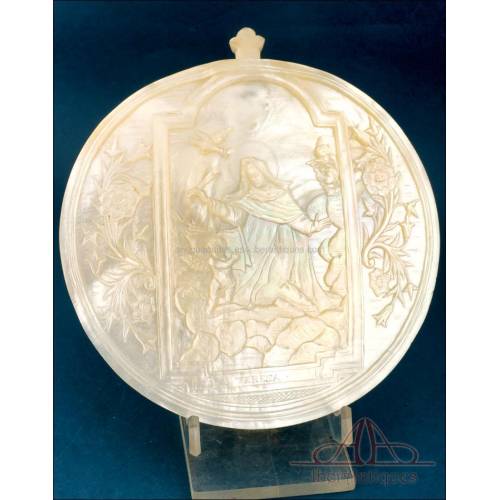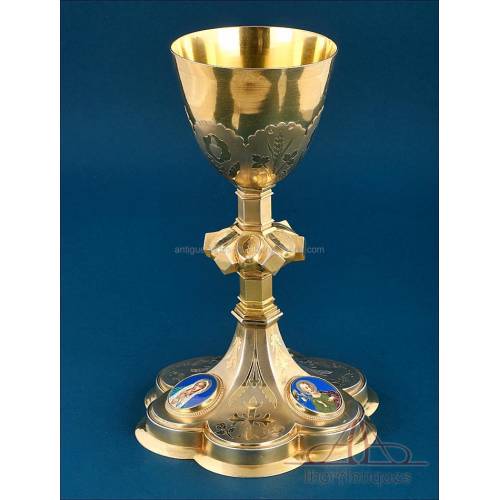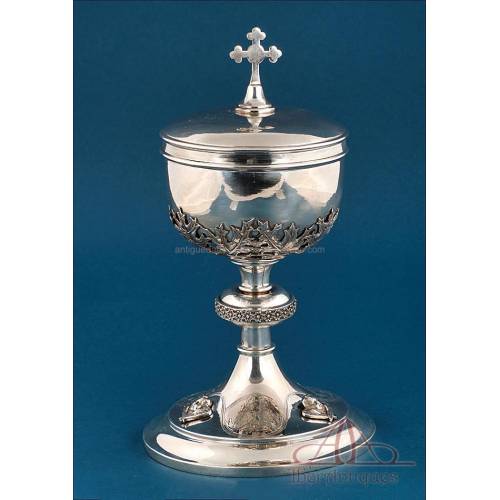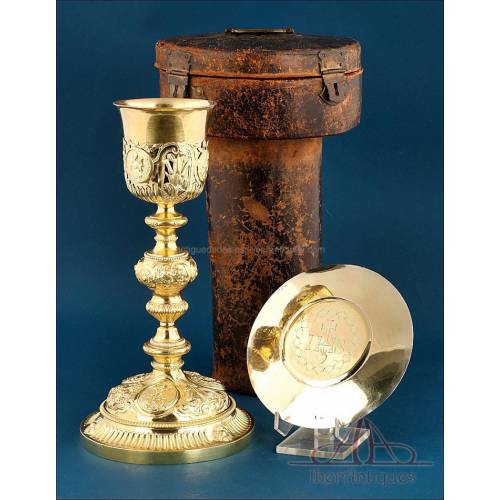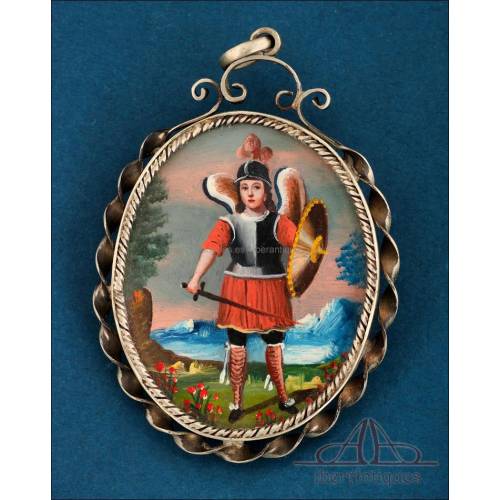E-293
Antique Roman Style Gilded Silver Chalice with Paten. France, 1932
Antique Roman-style chalice in gilded silver with paten. France, 1932. Hallmarked, engraved, with original case. A fine liturgical collectors item.
Antique Roman Style Gilded Silver Chalice. France, 1932
This magnificent antique chalice, crafted in France by the goldsmith Amédée Cateland, successor to the renowned silversmith Armand Calliat, and dated on the base to the year 1932, stands out for its beautiful Roman style, with solid lines and a wide cup that evoke the sobriety and strength of traditional liturgical worship. The entire set, both the chalice and the paten, is made of gilded silver and is preserved in excellent condition, housed in its original case lined with red velvet and silk.
Amédée Cateland was a prominent liturgical silversmith from Lyon, active during the first half of the 20th century. Following the death of Armand Calliat, one of the most important manufacturers of liturgical objects in Europe during the 19th century, Cateland took over the direction of his celebrated workshop, maintaining the very high standard of artistic and technical excellence that had made it famous. His works, including chalices, monstrances, and reliquaries, are characterized by sober elegance, refined symbolism, and precise execution, features that are fully evident in this 1932 chalice. The name Cateland, alongside Calliat, represents one of the noblest traditions of French liturgical goldsmithing, and his pieces are highly valued today by both collectors and religious institutions.
The chalice displays a sober yet deeply symbolic decoration. On the base, over a highly polished smooth background, there is a delicate frieze of engraved vines encircling the perimeter. The vine leaves and clusters of grapes clearly allude to the Eucharistic wine. Above this decoration, as a central element, there is an engraved rustic cross made of two intertwined tree trunks, evoking the wood of Calvary—humble yet powerful.
The node, of classic and well-proportioned form, bears an engraved Latin inscription: "ET MARIA JUXTA STABAT," meaning "And Mary stood by" or "And Mary was standing nearby." This phrase comes from the Gospel according to St. John (19:25), where it is narrated that the Virgin Mary stood firmly beside the cross of her Son, adding a profound spiritual value to the piece.
Inside the base of the chalice is an engraved inscription that reads: "PAUL AMIAND, 15 JUILLET 1932," possibly the name of the original owner or the priest for whom it was made. There is also a small goldsmith's plaque inside the base that reads: "AMÉDÉE CATELAND ORF., SUCCESSEUR D’ARMAND CALLIAT, LYON," highlighting its distinguished provenance and directly connecting it to one of the most celebrated sagas of sacred goldsmithing in France.
The paten accompanying the chalice is also made of gilded silver, featuring a beautiful depiction of the Mystic Lamb in the center, radiating rays of glory. It bears visible hallmarks on the edge, as does the chalice, which also has marks on the base and the upper rim of the cup. The entire set is harmoniously preserved, showing only light signs of use consistent with its age, which only serve to confirm its authenticity and real liturgical use.
This set is ideal for a priest in active ministry, someone preparing for ordination, or for being solemnly reintroduced into a parish, where it can continue its life in service of the faith.
Measurements:
Chalice: 18.2 cm (7.17 in) height, 11 cm (4.33 in) cup diameter, 14.2 cm (5.6 in) base.
Paten: 15.5 cm (6.1 in).
Total weight: 616 g (Chalice 541 g, Paten 175 g).

